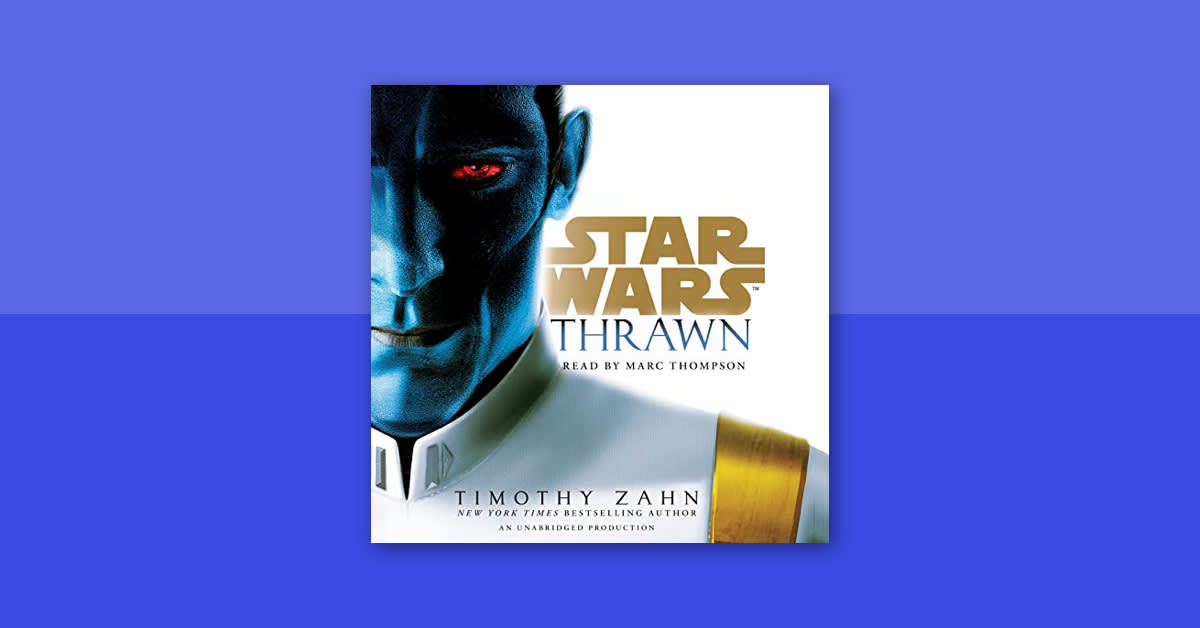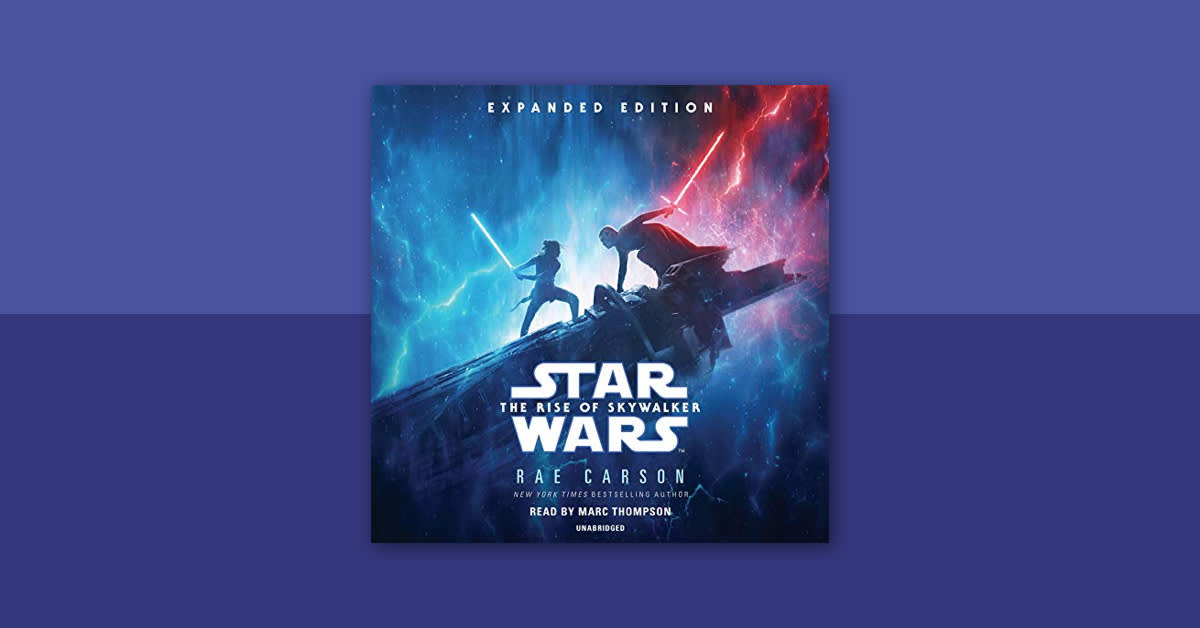In the early 1970s, a young filmmaker named George Lucas began writing an adventure-centric space opera inspired by elements ranging from sword and sorcery fantasy to Akira Kurosawa's The Hidden Fortress to the Vietnam War. He began shopping his ambitious, innovative project to studios and receiving rejections—until his vision finally found its home at 20th Century Fox. After gathering a principle cast of young newcomers by the names of Mark Hamill, Carrie Fisher, and Harrison Ford, shooting in locales as varied as Guatemala and Tunisia, and putting the film through rewrites and edits, Lucas created what would become one of the most enduring epics in cinematic history: Star Wars.
It’s been more than four decades since the release of 1977’s Star Wars (now known as Episode IV: A New Hope), and though the original Skywalker Saga that started it all has come to an end, the franchise is ever-expanding. Star Wars fans have more options than ever when it comes to media in the universe. There’s a slew of shows, both animated and live action, a growing roster of films, endless comics and books, an array of video and arcade games, and, of course, a score of innovative audiobooks—all set in that familiar galaxy far, far away.
Why did the Star Wars canon change?
But as Shmi Skywalker once said, “You can’t stop change any more than you can stop the suns from setting.” In October 2012, the Walt Disney Company acquired Lucasfilm, the production company responsible for creating Star Wars content. As we know now, Disney had huge plans for the franchise, with a new trilogy, a set of standalone films, and a deal with video game giant Electronic Arts (EA) all in the works. So, to free their own creators to make content that was boundless in exploration and to avoid any conflict in continuity with upcoming content, Lucasfilm announced that the expanded universe (EU) established prior to 2014 would be rendered non-canonical. Only Lucas’s six films (the original and prequel trilogies) and The Clone Wars (both the series and animated film) would be carried over into the new canon, while hundreds of comics and books and a few beloved games were now considered “Legends” of the Star Wars universe—not technically canonical, but immensely enjoyable stories set within the same universe.
If you’re still a little lost, don’t worry—below, we’ve broken it down a bit further so you can explore every corner of the Star Wars galaxy with confidence.
So, what is Star Wars canon?
As outlined in our canon timeline explainer, in January 2021 Lucasfilm announced a new set of six dividing eras for all canonical content: The High Republic, The Fall of the Jedi, The Reign of the Empire, The Age of Rebellion, The New Republic, and The Rise of the First Order. These periods span from the golden age of Jedi peacekeepers to the tumult of the Clone Wars to the rise of the ruthless Kylo Ren, and serve as a way of chronologically organizing an ever-expansive multimedia franchise.
Currently, the official Star Wars canon consists of 13 films: the nine episodes in the Skywalker Saga, two standalone films (Rogue One and ), and the 2008 animated feature film, The Clone Wars. The Skywalker Saga refers to the original story that began in 1977. The original trilogy (Episodes IV, V, and VI) follows adventurous farmhand Luke Skywalker, headstrong Princess Leia Organa, and rapscallion smuggler Han Solo as they join the cause of the Rebellion in the Galactic Civil War.
In the 1990s, Lucas returned to the universe, creating the prequel trilogy (Episodes I, II, and III), set roughly 30 years before the opening of A New Hope. This trilogy chronicles the rise and fall of Luke’s father, Anakin Skywalker, a Jedi who is prophesied to be the Chosen One, as well as the galaxy’s decline into an authoritarian state under Emperor Sheev Palpatine.
The sequel trilogy, created by the newly Disney-owned Lucasfilm, made its debut in 2015. These three films (Episodes VII, VIII, and IX) feature a new cast of characters, including eager Force-wielder Rey, former Stormtrooper Finn, and Resistance pilot Poe Dameron, in addition to longtime fan favorites like Han, Chewie, Leia, Lando, and Luke. In these installments, democracy is threatened yet again, this time by the sinister First Order, an oppressive militant operation that has emerged from the ashes of the Empire.
So, the chronological viewing order of the live action Star Wars films is as follows: Episode I: The Phantom Menace; Episode II: Attack of the Clones; Episode III: Revenge of the Sith; Solo: A Star Wars Story; Rogue One: A Star Wars Story; Episode IV: A New Hope; Episode V: The Empire Strikes Back; Episode VI: Return of the Jedi; Episode VII: The Force Awakens; Episode VIII: The Last Jedi; and Episode IX: The Rise of Skywalker.
Also canonical are multiple television shows, notably the hit animated show The Clone Wars (which gave us fan favorite characters like Rex and Ahsoka Tano), Rebels (a gem that welcomed Grand Admiral Thrawn back into the canon), and Disney+ original The Mandalorian. Disney’s partnership with EA netted four video games, Battlefront, Battlefront II, Jedi: Fallen Order, and Squadrons.
Perhaps one of the greatest elements of the newly established canon, however, is the range of books and audiobooks that have been introduced. Authors from across genres and styles have added their own characters and storylines to the rich worlds established in film and television. The new literary canon has a strong sense of continuity, weaving threads of different narratives together to create cohesive stories that are firmly grounded in the galaxy so many are familiar with. Whether you’d like additional backstory on your favorite character, a new cast of heroes, or a deep dive into the dark side, there’s a canonical story out that fits the bill.
If you’re still a bit confused about what’s canonical and what isn’t in terms of the world of comics and books, you can generally adhere to this rule of thumb: any official Star Wars story published (or set to be published!) after the year 2014 is canonical, while all those published before that year are not. As any fan can tell you, however, that certainly doesn’t mean those stories aren’t worth listening to.
What is Star Wars Legends?
So, what happened to the roster of comics, games, audiobooks, and more that were rendered non-canonical following Disney’s reassessment of the timeline? Luckily for Star Wars fans, those stories were not struck out entirely—instead, they were pivoted to their own timeline, called Star Wars Legends. As the name implies, it’s helpful to think of these stories as myths or folktales that exist within the universe itself. But before Star Wars Legends, these sagas were part of the extensive Star Wars Expanded Universe (EU).
The Legends timeline and that of the officially established canon vary as well, with a continuity that spans the following eras: Before the Republic, The Old Republic, The Rise of the Empire, The Rebellion, The New Republic, The New Jedi Order, and Legacy. While there is some overlap in events and storylines when compared to the six eras of the new canon, major plot points and lore at times diverge drastically. Details of the Legends universe, like the Je’daii Order or the Lost Tribe of Sith and characters including Jaden and Jacen Solo or clone Luuke Skywalker, may feel a bit jarring to those who consider themselves casual fans. Still, if you’re looking to become more entrenched in the Star Wars universe, the Legends of the past EU offer intricate world-building, additional context, and some fascinating storytelling.
Among the media removed from the canon in 2014 were 2003-2005 Star Wars: Clone Wars miniseries (an entity separate from The Clone Wars animated series that began airing in 2008, which remains part of the established canon), made-for-television films like 1985’s Ewoks: The Battle for Endor and the now notorious Star Wars Holiday Special, and the acclaimed Knights of the Old Republic video game series. Also made legendary were hundreds of short stories, comics, and books.
In 1978, Alan Dean Foster authored what is now known to be the first EU book, a novel called Splinter of the Mind’s Eye that follows Luke and Leia as they hunt for the Kaiburr crystal, a powerful Force relic found on Mimban. The publication of this title ushered in a new wave of storytelling, one that built upon and followed up the stories that had already been established in the films.
The EU of this era is also credited with once again exciting Star Wars mania, ensuring that the franchise wouldn’t fizzle out. Three titles in particular, Timothy Zahn’s original Thrawn trilogy, sparked interest in the universe anew, earning a steadfast following of fans who laud the series to this day. From there, the EU grew exponentially, especially since the prequel trilogy offered creators an even larger timeline and a new cast of characters to work with. Like the canon, fans can find a Star Wars Legends audiobook that will appeal to them regardless of their interest. Whether you want to hear more about Obi-Wan’s time on Tatooine prior to or the Sith order under Darth Bane, the Legends timeline has you covered.
What characters appear in both Canon and Legends?
If a character was introduced in what’s now considered Legends, and those stories are no longer canonical, it’s safe to assume those characters won’t make an appearance, right? Well, not exactly. Concepts and characters from the Legends universe are routinely being reestablished in canon. Take, for instance, the aforementioned Grand Admiral Thrawn, who first made his appearance in 1991. Thrawn was later reintroduced to the canonical timeline with an arc on Rebels and a new trilogy by Timothy Zahn. And Thrawn is not alone. Eagle-eyed fans noticed a reference to Revan, Jedi-turned-Sith Lord lead of the Knights of the Old Republic video game, in the canonical The Rise of Skywalker visual dictionary, and characters, planets, and concepts from the Legends universe consistently find their way back into the canonical galaxy.
What’s next for the Star Wars universe remains to be seen. With a slate of recently announced films, television series, and stories, Lucasfilm shows no sign of slowing down, constantly broadening the timeline and elaborating upon the established canon. Whether the stories crafted are totally fresh or some familiar Legends get resurrected along the way, we’re bound to be in for another happy landing. (And if you're looking for your next listen, watch, or read, check out our guide to all of the current content in the Star Wars canon.)










